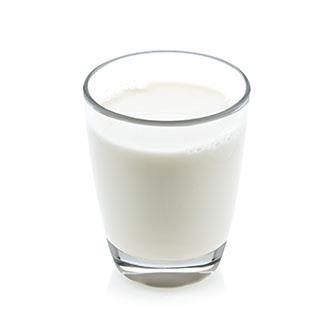
By CardioSmart News
Three glasses of milk. That’s how many 8-ounce servings Americans older than 9 should aim for daily, according to the U.S. Department of Agriculture nutrition guideline. But that recommendation isn’t justified, according to "Milk and Health," a review article published Feb. 12 in the New England Journal of Medicine.
Milk is a building block of nutritious eating for many people. It contains a host of essential nutrients including calcium and Vitamin D for bone health, as well as potassium. Yet most of us consume only 1.6 servings of dairy products on average per day.
The overall health benefit of adults increasing their intake to the recommended amount is unclear, the authors say, while concerns about possible negative effects have surfaced. In coming to their conclusion, the authors assessed the research about milk’s effect on health regarding various topics, including bone health, weight, and heart risk factors.
Milk can play an important role in growth and development, especially for children. Increased milk intake increases growth over time as well as height. But tall adults are also associated with a higher chance of hip fractures, although it’s not clear what’s behind this association. The authors say existing data don’t support high intakes of milk for adolescents or adults to prevent fractures later in life.
In examining the research, the authors found no overall effect of milk or dairy products on weight. Counter to USDA recommendations, reduced-fat dairy or low-fat milk isn’t superior to whole milk to help control weight. In addition, there is some evidence of long-term weight gain in children who take reduced-fat milk instead of full-fat milk.
Interestingly, yogurt is associated with less weight gain. It’s one of the only probiotics in the Western diet. However, this association might be due to the tendency for people who eat yogurt to have healthier lifestyles, and more research is needed.
In terms of heart risk factors, it’s been shown that the DASH diet—which emphasizes low-fat dairy products—lowers blood pressure. But it’s unclear whether that's because dairy products high in potassium lower blood pressure or that the DASH diet also cuts salt intake while increasing fruits and veggies.
Current recommendations encourage reduced-fat milk over full-fat to help limit the intake of saturated fat found in dairy products. Avoiding saturated fat helps to maintain healthy low-density lipoprotein (LDL) cholesterol levels. But the effects of cutting saturated fat depend on the foods being compared.
In a similar way, the effects of milk in these trials depend on the foods being evaluated, the authors state. For example, if milk replaces sugar-sweetened beverages or refined carbs, then there’s a positive effect. But if milk replaces nuts, legumes, or whole fruits, then the results may be different.
The report concludes that the optimal intake of dairy products should reflect your overall diet. If you have a low-quality diet, then more dairy foods can be beneficial. But if you have a high-quality diet, then increasing consumption is unlikely to have significant benefits and may even cause some harms, the authors write. If you decrease your dairy intake, you can get calcium from other foods, for example from kale or broccoli, and supplements are effective for Vitamin D.
Until more research is done, the authors conclude that up to two servings of dairy foods per day is reasonable for adults and emphasis on reduced-fat milk over whole milk is not needed.
Read the full article: “Milk and Health,” New England Journal of Medicine, Feb. 12.